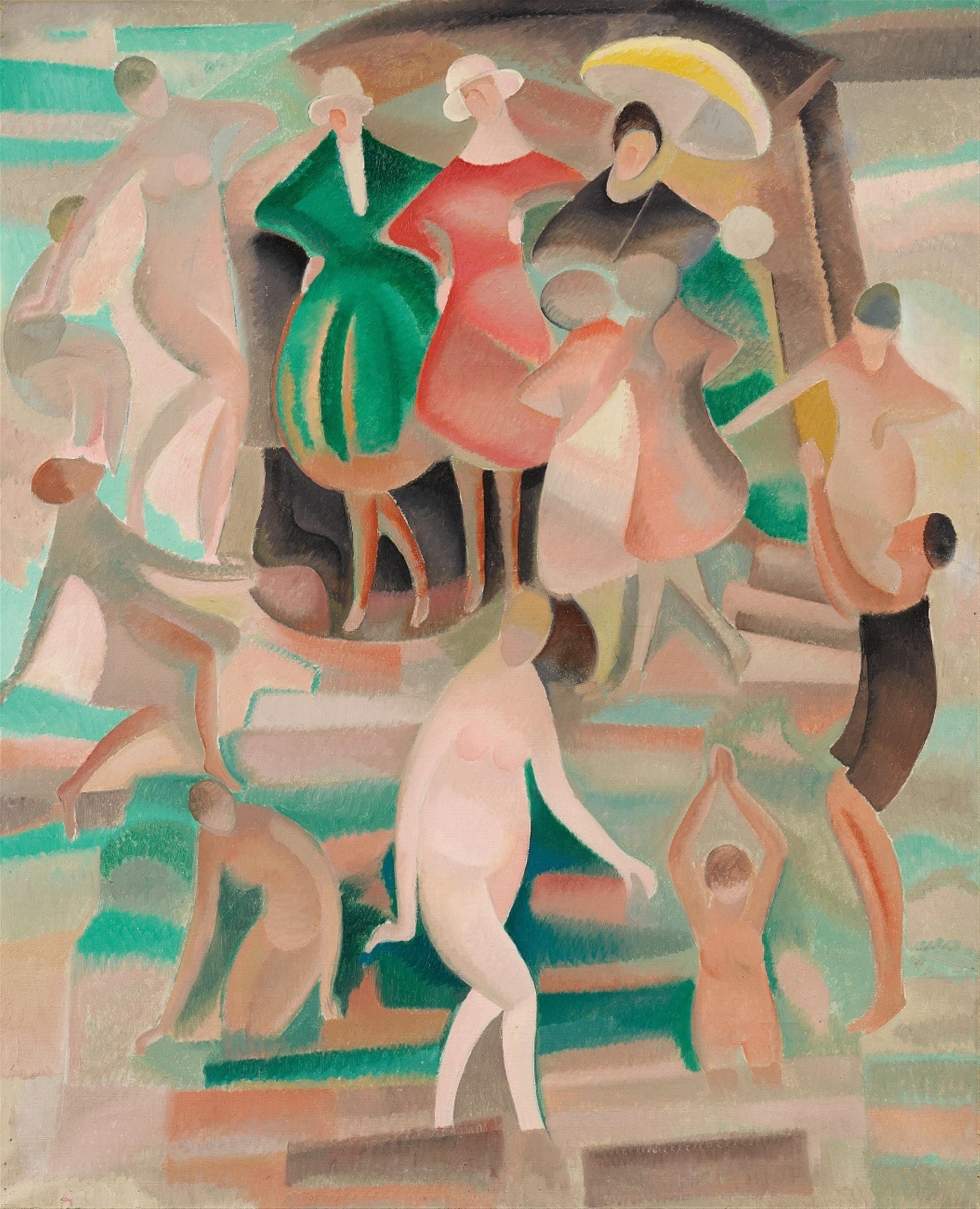Alice Bailly
Jeux d'été
1920
Oil on canvas 80 x 65 cm Framed. Unsigned. Titled in black brush verso lower right and at the top a stamp by Fondation Alice Bailly, confirmed by the signature of the President of the foundation. - In fine condition with vibrant colours. Very few minute colour losses.
Alice Bailly was born in Geneva in 1872 and is among those Swiss artists who were long forgotten. It was not until the exhibition “Kubismus, Futurismus und Orphismus in der Schweizer Malerei” held at the Museum Winterthur in 1970 that her works became known to a broader public. Bailly studied in the 1890s at the École des Beaux-Arts in Geneva, and from 1904 she settled in Paris for an extended period. There, at the Salon d'Automne, she became known through a series of woodcuts exhibited in 1906 and an oil painting shown in 1908. She was friends with numerous fellow artists, such as Raoul Dufy, André Lhote, Francis Picabia and Kees van Dongen. From 1910 influences from Cubism, and somewhat later also Futurism, made their way into her work; Bailly developed her own independent, lyrically dynamic style out of these new impressions. The artist had “striven for an execution realised according to Cubist and Futurist principles in her large oil paintings, which manifest certain constructivist laws, elements of pictorial structure, the articulation of forms and colours for the sake of three-dimensionality. In this realm she found epochal solutions, which provided the foundation for her historical significance in Swiss art.” (Hans Neuburg, in: Alice Bailly 1872-1938: Gemälde, Aquarelle, Zeichnungen, exhib. cat. Galerie Strunskaja, Zurich 1973, n. pag.). She spent the years of World War I in her hometown of Geneva. There she created her own medium with her “tableaux-laine”. In these wool pictures created between 1916 and 1919, she used various colours of wool string like a “painting medium”: not in the sense of applied art, but as an equivalent to oil painting. She returned briefly to Paris and then remained in Switzerland from 1922 until her death. Her visual idiom became more ornamental and stabilized. Cheerful motifs in delicate colours featuring bathers and dancers testify to the artist's pronounced enjoyment of life.
Provenance
Galerie Klopfer, Zurich (1982); Private collection, Switzerland
Exhibitions
Milan (Galleria Milano) (galley label on stretcher); Zurich 1974/75 (Galerie Strunskaja); Vienna/Innsbruck/Aargau 1985 (Galerie nächst St. Stephan/Galerie Krinzinger, Forum für aktuelle Kunst/Aargauer Kunsthaus), Alice Bailly. Werke 1908-1923, cat. no. 39 with illus. 34 (exhibition label on stretcher)

